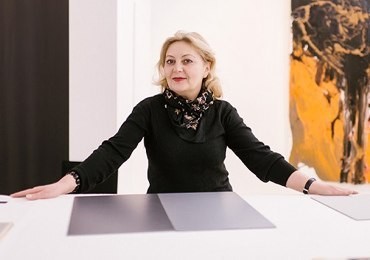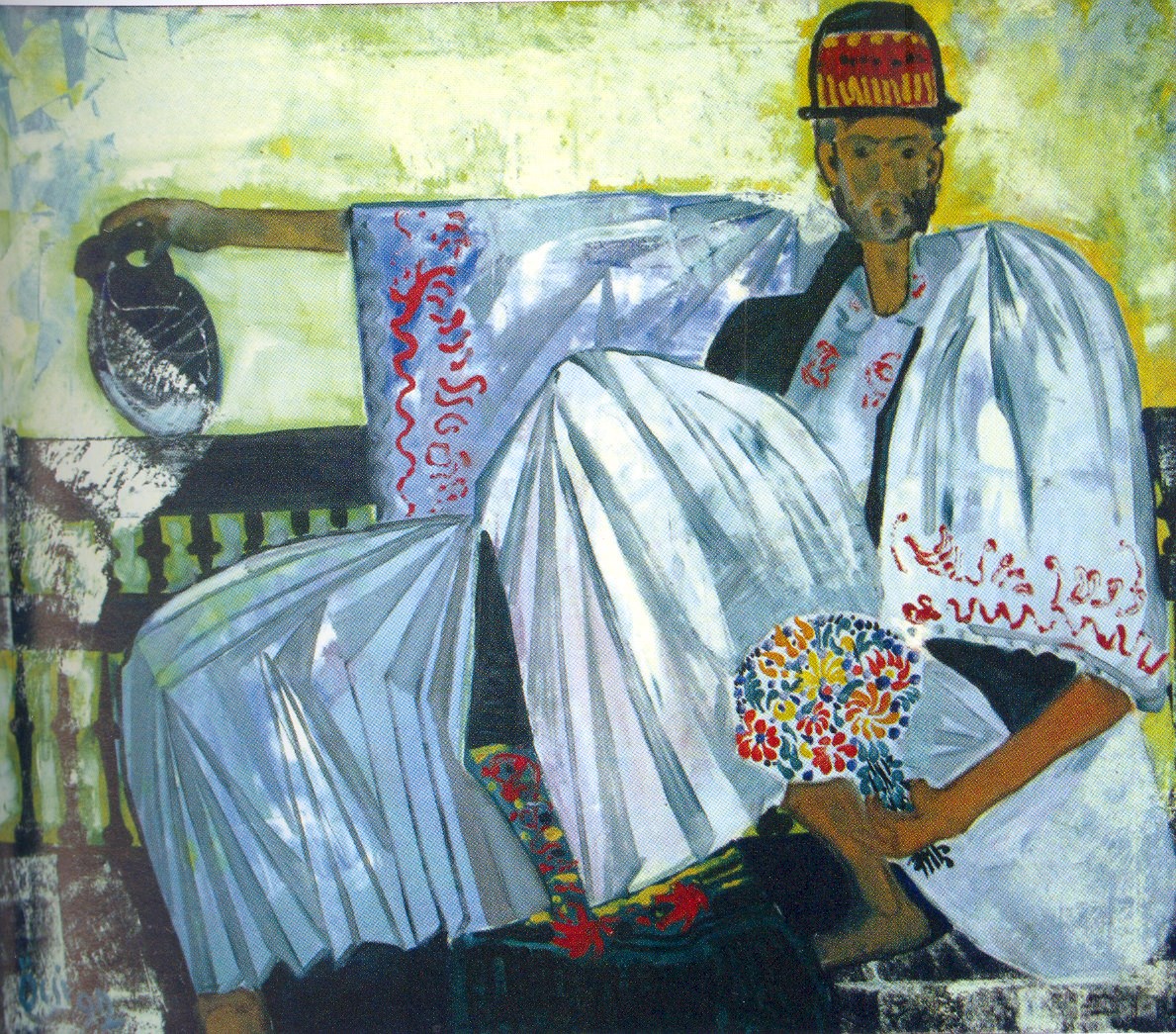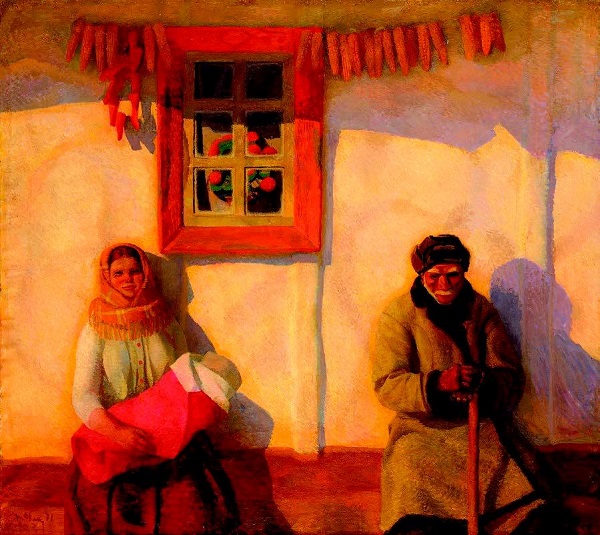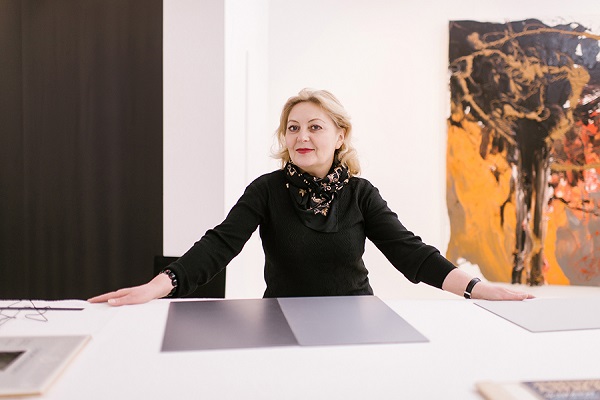
Galyna Sklyarenko: "The artists I write about have already become a phenomenon of our culture and art"
2018

Galyna Sklyarenko – a symbolic name in Ukrainian art history. During the Book Arsenal in 2018, with the support of the publishing house ArtHuss, Brovdi Art Foundation and ABRAMOVYCH.ART, the art historian presented her new book "Ukrainian Artists: From the Khrushchev Thaw till the Independence Time". ArtUkraine talked with the author about this publication, the personalities represented in it, and the era of the second half of the 20th century.
What are the main questions discussed in your new book "Ukrainian Artists: From the Khrushchev Thaw till the Independence Time"?
The more I investigate the late Soviet era – from the Khrushchev Thaw to Independence time, the more obvious for me is that in the post-Soviet period the interpretation of art as a strict contraposition of official / unofficial, conformism / non-conformism does not correspond to the actual artistic process in our country, simplifies the meaning of what happened, distorts certain creative fates. After all, what is conformism? It is a person's ability to adapt to the circumstances. If a person does not know how to live here and now, he simply ceases to exist. Therefore, the use of the term ‘non-conformism’ in relation to people, to creativity, to art is a great test and large claim. It means that we require the artist to constantly be a hero: confront time, society, and creative environment. Meanwhile, the analysis of individual creative biographies testifies that a strict non-conformism position is a very rare exception. The artists mainly (like numerous citizens of the USSR), although they were critical of what was happening in the country, although they understood the impasse of socialist realism, led a dual existence: they worked in publishing houses, art funds, etc., but in the studio, ‘for themselves’ they created what was in line with their talent and aspirations. Do not forget about the complex nature of art gift itself, which is often not so elastic. An artist may be anxious to write, paint, sculpt what is ‘necessary’, which would bring official success, but the talent led him to another line, on a different creative path, led into the underground, into an informal existence, turned into a personal drama…

The creative fate was influenced by the fluctuations in the social climate in the country, which not everyone could adapt to… It should be remembered that the scheme ‘non-conformism – socialist realism’ appeared in the era of Perestroika when art life was full of almost unknown not socialist realism artists, they had to be somehow called, to find their place in the Soviet system. But time is passing, therefore more precise, differentiated approaches to art are needed. In 1990, I prepared a large exhibition ‘Ukrainian mali-art-stvo of the 60-80s’, which for the first time showed some ‘unofficial’ works. For me, then, they were a discovery, and I positioned their authors as representatives of the underground. But now, after the documents have been published, the manuscripts of these artists, when it became possible to carefully reconstruct their work, everything turned out to be much more complicated and ambiguous…
Today's fashion to make everybody ‘the fighters against the regime’ is not just untrue, but for me, there is a disrespect to these artists themselves. Then in the 60s, 70s, in the early 80s, no one could imagine that the Soviet Union could disappear. The majority perceived the Soviet system as a climate that could only be mitigated, but not changed. For numerous people, it was indecent to join the party, make a great career, it was important to realize yourself in the profession, but it did not exclude other ways. The membership in the CPSU was not always reflected in the artist's creativity, which could be completely unrealistic. The official Soviet art changed all the time, other works, in which sounded different ‘voices’ of the artists, appeared next to the ‘thematic paintings’. The art of this time is very peculiar, walled off by decades from the big world of culture, it does not fit in contemporary Western modernism, it changes everything in its own way. This art – personal mythologies, of its own aesthetic representations …

Art is generally a very complicated thing. It is like a man, a man is complicated, and art is complex. In this book, I wanted to look at the era through the prism of individual creative destinies, individual creative ways with attention to each artist. After all, each of them is a phenomenon, a part of our culture. I did not want to invent or adapt their creativity to any scheme or delete ‘inconvenient’ pages. The mosaic of these personal ‘arts’ – such different, unlike each other, makes up a picture of the era.
What does this era mean to you personally?
I lived at that time, I was lucky to know numerous of those artists in question. I am lucky to be friends with some of them today. Honestly, it's very interesting for me to understand what was happening, to understand the time, which has already gone forever. Of course, I want generalizations, to imagine some kind of a complete picture of art, but, in my opinion, it's impossible to do without materials about artists, without attentive monographic studies.
What is special about the art of the second half of the 20th century?
First of all – its ambiguity. After all, with the Thaw the country entered a new period of its history when it is no longer possible to speak about totalitarianism. The new situation, more or less liberal, did not exclude ideological pressure, censorship, the dependence of an artist on the state. But still, it was already the post-Stalin period, when discussions returned to art life, the possibility (albeit limited) of individual statements. Of course, talented art arose and then existed above all in spite of circumstances, overcoming the lack of understanding, the inertness of the environment, the provinciality of our art life. Hence, probably, the tragedy of numerous creative destinies…
I would like this book to give an opportunity to look at the era and the artists' creativity differently, to reveal the meaning and uniqueness of what they did, regardless of which segment of art they belonged to officially or unofficially. I wanted to have different voices in it… In my opinion, if art teaches something, it is, first of all, tolerance, understanding of the ‘other’… And I wanted to show the artists of this time as different, ‘others’, but connected by one era.

What are the relations between an art critic and an artist?
Complicated. Because if they have something in common and like each other, then, they will be friends for sure. And you do not match very often. Moreover, artists often want to be seen only as a genius, so an art historian should come and say that he is paving new ways, he is great, even when it does not correspond to reality… In addition, not all artists are interested in something and someone, except themselves. And very few people who just love to talk about art, about its complexity and simplicity, about its history and modernity, about what they understand and about what they do not understand. Such people, in general, are very few, alas. And, of course, I want to be friends with such people.
What is the role of the discussion in the understanding of art?
Culture is a constant discussion and constant dialogue. This is a constant dispute and reassessment. Culture lives only in discussion, only in constant criticism: the previous, contemporary, established foundations, new views. Because culture is not a set of immutable values, it is a constant renewal of experience, constant comprehension. There is not only the best but also a lot of different things in culture … Discussion helps to understand them.

Stay up to date with art events, subscribe
